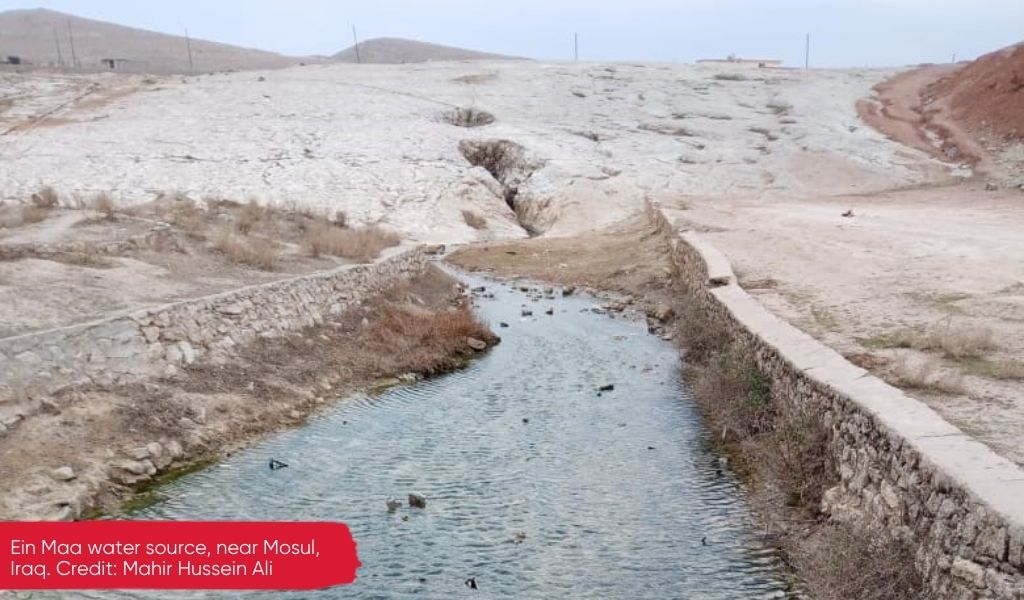Heritage and culture can be rooted in physical spaces, so when these come under threat or are permanently altered by conflict or climate change, this can have an impact on those intangible rituals and practices which can define communities and secure their survival. In this final blog, part of the IDS-led CREID programme initiative to collect and document oral heritage in Iraq and Syria, Mahir Hussein Ali from the University of Mosul, describes how the customs and heritage of his community are rooted in the landscape, and which both shapes and is shaped by the way his people interact with it through their heritage practices.

Heritage practices which are rooted in places can come under threat through conflict and climate change. These can result in turbulent displacements – physical and existential – as people are forced to move from their homes and the landscapes which has once situated their identities and belonging are changed, as has been the case for Iraq’s religious minorities, who were and still are targeted by Daesh. While new traditions and ways of living can emerge, the process of remembering can also be a way of re-establishing connections to places and people. As part of the IDS-led Coalition for Religious Equality and Inclusive Development (CREID), we’ve been working with religious minority communities in Iraq and Syria to pluralise heritage voices, undertaking oral histories that document the heritage that they deem valuable.
In the final blog in our series bringing voices from in and around Mosul, Mahir Husseim Ali one of the participants in the project who will be working with young people from religious minorities to collect and document their heritage, takes us to Tal Moussa, a village 70 km northwest of the ancient Iraqi city of Mosul. He described how the customs and heritage of his community are rooted in the landscape and features such as the local water source Ein Maa which gives life to the people there in all its different forms. [Introduction written by Sofya Shahab, leading the CREID Heritage Work in Iraq and Syria.]
One water source touching many lives in myriad ways –
by Mahir Hussein Ali, Department of Translation, University of Mosul.
I have always remembered Ein Maa. I still visit it every day when I return the village of Tal Moussa where I was born in 1980.
The source is a spring that flows through white marble rocks and emerges into a pool that is three meters deep, forming a natural swimming spot. As children, we would visit the water source every afternoon as, after lunch, it was common for many of the village’s young men and children to gather there. From the age of about seven, I would often go with the other children to fish. The water source had a lot of fish and dozens of crabs hiding between the rocks. Or, we would play a game in which we would throw a black rock into the bottom of the pool and would compete to see who was the first to remove the rock using just their mouth. Or we would see who could hold their breath the longest underwater.
As well as a source of fun, the water was a vital resource for the infrastructure of our village. Several canals derived from the spring and branched into different irrigation channels to water the trees and crops. The village was famous for its grapes, pomegranate, figs, and apricots in addition to all kinds of vegetables throughout the seasons. Shepherds would also bring their sheep and their huge dogs to drink from the spring, the ram ringing the bell from his neck as he walked and led the way for the others, their ‘baa’ing a backdrop to our play.
Life was simple there. People had furniture such as carpets, cushions to sit on and bed covers made from wool. After the men had sheared the sheep, the women would take the wool to the spring to wash it. All the women would go and work together using thick wooden sticks with handles to hit the wool repeatedly while continuing to spin it in water. After this they would wash the fibres with soap and spread them on the ground for the sun to dry. Whenever the women would go to the spring to wash the wool, the men of the village would stay away as a way of respecting the town’s traditions and the women’s space. Women would also travel from other villages with their wool and rugs as their villages either had no water networks, or else they would dry through the summer months.
As I grew older, I would go with the other young people from the village, during the summer evenings. We would light a fire next to the spring and play popular games like Jijam in Kurdish. This entails standing on one foot while trying to knock your competitor in water. Sometimes the youth would challenge each other to go for a swim as the adults had forbidden us from swimming there at night claiming that this was the time for the ghosts to swim. I was never one of those brave enough to swim at night because of this superstition.
Remembering Ein Maa, the games we played and stories that are told about it connects me to my heritage, my family and my village, even though I no longer live there. Should more youth move away from the village and the way of life change, it is these memories of our culture that will still serve to bring us together and to transport us there, keeping our heritage alive for generations to come.